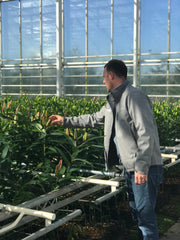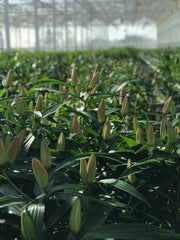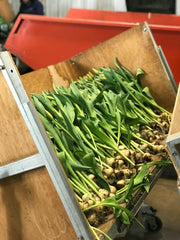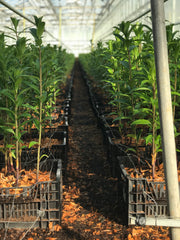
Why I'm NOT Carrying Red Roses this Valentine's Day
1. The hyper focused demand for a single flower carries a lot of pressure not only for the environment, but also for the workers who are growing them. Most of the roses sold in the United States are produced in central and south America where labor laws, worker protections, and environmental restrictions are much more lax. This is one of the reasons they are grown so cheaply- low wages, low worker protections and lower environmental oversight mean higher profit margins.
2. Florists already stress about the idea of packing a month's worth of sales into 2 days, but the idea of making dozen rose arrangements in red for days on end makes me want to give up Valentine's Day altogether. In my experience, a lot of customers request red roses because they don't know what else to ask for. This is a huge fail on our part as florists. If we don't offer anything else, how do our customers know there's something else to offer? I curate a collection of Valentine's Day flowers that are inspiring not only for me, but for the recipient. They are unique to Foxbound Flowers and something you wouldn't find at any other floral shop.
3. There are other flower choices that are more eco-conscious. Here in Oregon, Tulips are a better choice for the season. Grown by Oregon Flowers, Inc. only 90 miles from the Foxbound Flowers studio, they have a much smaller carbon footprint than roses. Tulips require less chemical pesticides and fungicides than roses, they can grow at lower temperatures, and they grow quickly. They are grown in OSHA approved conditions, and the money supports local families and a small town near you. I visited the Oregon Flowers, Inc. greenhouses and was super impressed by their operation, their efficiency, and their dedication to eco-conscious choices whenever possible (They use nematodes as pest control!) . For more info, read my blog Dutch Greenhouse in Oregon.


4. I rail against the idea that you need to express your love in a singular way, and that red roses are the only way to do that. Everyone's love is different, and everyone else should express it however they want. If you are giving someone flowers with love, then it doesn't matter what color they are, they are the color of love. Someone, somewhere, at some point in the not-so-distant past attached the meaning of love to a red rose most likely because they had a surplus of roses they needed to move in February (hats off to their marketing person!). We could just as easily decide to detach that meaning if it doesn't work for us anymore. Any flowers can be Valentine's Day flowers. If you're giving them on Valentine's Day, they are in essence Valentine's Day flowers.
5. Florists make a smaller profit margin on Roses during Valentine's Day than any other time of year, which means more work and less pay. I already struggle with low profit margins on a regular basis, why would I want to double down on the number one problem that plagues my florists? I'm constantly looking to find ways to work smarter, not harder, and selling red roses on Valentine's Day flies in the face of that goal. For more information on the shrinking profit margins of red roses on Valentine's Day, read this NPR article:
20,000 roses, inflation and night terrors: the life of a florist on Valentine's Day(FEBRUARY 14, 202310:39 AM ETBy Stacey Vanek Smith)
In conclusion, I'm not selling Red Roses this Valentine's Day in protest of the Valentine's Day status quo. Red Roses, your day is done.






